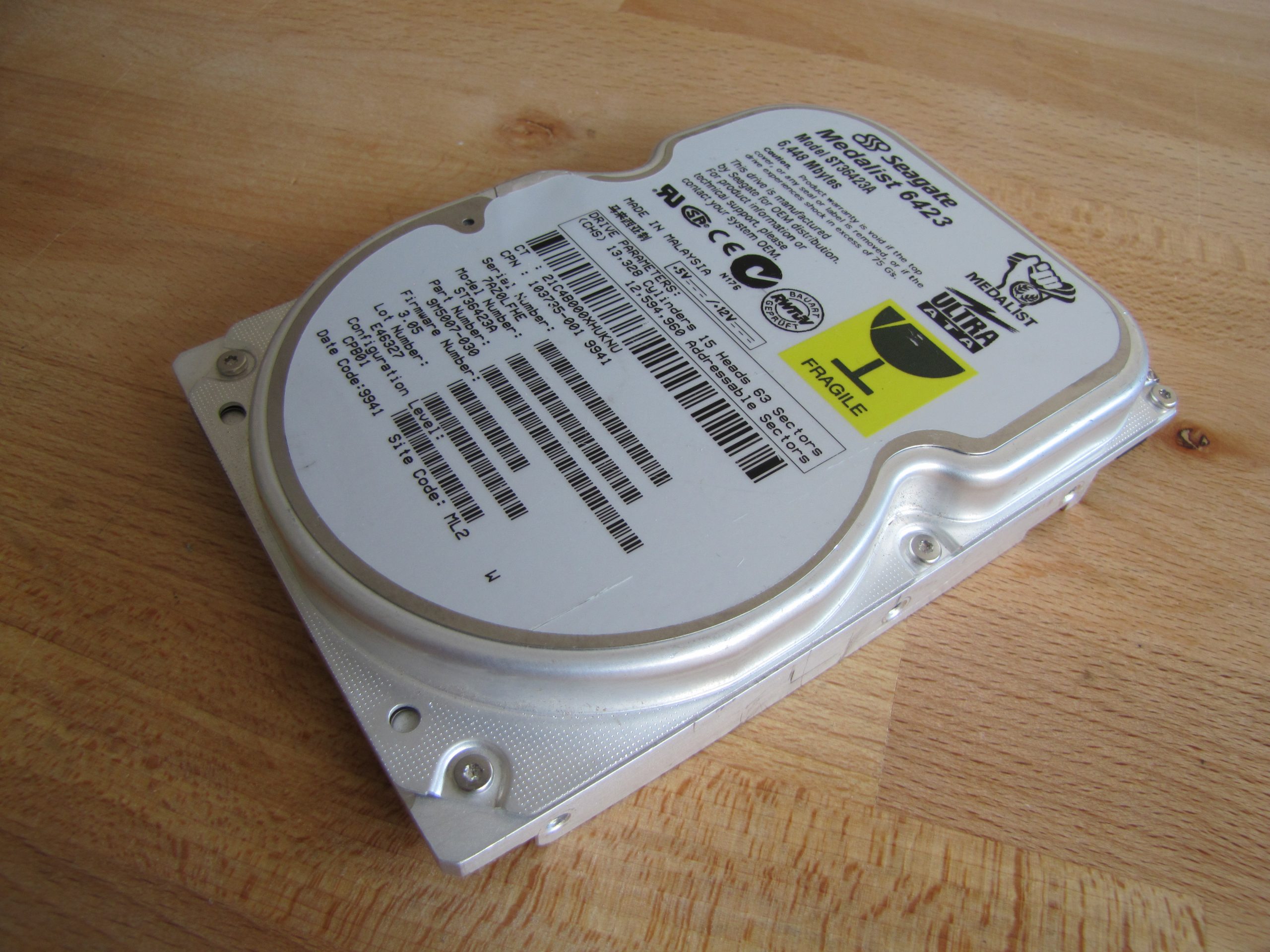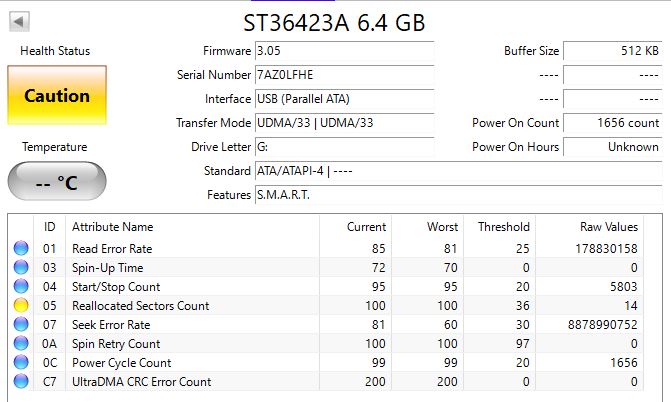A design from Seagate commonly seen on the Barracuda ATA I, ATA II and ATA III, alongside many other Medalist models from the late 90’s. This one was manufactured in late 1999. While nothing special, a drive still being functional after 20 years is never something to take for granted.
Certainly a more budget-friendly offering, this Medalist screams simple but functional design.

Drive Attributes ------------------------------------- Seagate Medalist 6423 ST36423A ------------------------------------- Capacity 6.4GB Mfc Date 1999-10 Interface PATA Platters 2 Heads 4 (short-stroked)* Cache 512KB RPM 5400 Protocol Ultra DMA-2 Origin Malaysia (ST, ex-CPM) *unconfirmed, but most likely -------------------------------------
This one was manufactured in Malaysia, hailing from a factory once named Conner Peripherals Malaysia. While Seagate no longer has a presence in the country, this factory was a gain from their acquisition of Conner Peripherals in 1996. The fairly cryptic tradition of Seagate’s date coding hadn’t come into place yet with this one, maintaining a YYWW format, placing this one firmly at the end of 1999.
Surprisingly, this drive has very little documentation surrounding it, being fairly unusual considering Seagate’s excellent track record of resource retention for older drives. Seemingly, this model is supplemental to the same series of drives as the Medalist 4312, 8422 etc. However, while these models have the same platter density of 4.3GB per platter, the Medalist 6423 is nowhere to be seen. Perhaps this model came later, creating yet another budget-friendly model to add to the pile and never being properly documented. We’ll never know for sure.
The ST317242A was the highest end offering in this family, offering 17.2GB with 4 platters and 8 heads.

A classic Seagate, boasting the usual fun Medalist logo. The label provides enough useful information.


The SeaShield was fairly ubiquitous on Seagate drives from this period, which is something that often stands out and provides a sense of high quality. However, what we want to see is under this thing! Getting to the PCB requires a bit more work than on most drives.

The foam here is clearly used for isolation between the SeaShield and the PCB itself, alongside some protective padding.

The microcontroller on this board is manufactured by STMicroelectronics, a favourite for Seagate alongside Agere for much of the early-mid 2000’s. Even though NEC were building drives for IBM at the time, they clearly had no issue outsourcing IC’s to other competing manufacturers at the same time. 512KB of cache can be found, some flash memory and a spindle motor controller. Sadly, the spindle motor manufacturer isn’t clear.

It’s fine at what it does. Nothing fancy.

With expectedly rudimentary SMART attributes, this one has a few reallocated sectors. For a 20+ year old drive I can’t fault it for that, having not really budged for an extended period of time while in use. Fortunately, the drive doesn’t seem to be showing signs of ongoing degradation.
Aside from that, this is a fairly standard Medalist drive from the perioid. The seek-test is quite striking.
Seagate ST17242 Family – Product Manual (pdf) (note: ST36423A is not present in documentation)
If you missed the video I made on this drive, you can find it here: